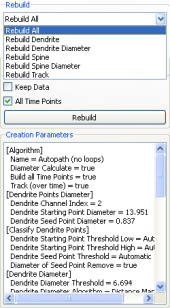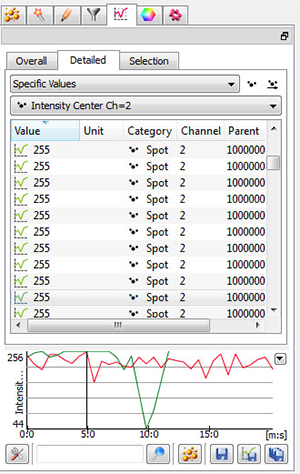Applications
 Part of the Oxford Instruments Group
Part of the Oxford Instruments Group
Expand
Collapse
 Part of the Oxford Instruments Group
Part of the Oxford Instruments Group
Statistical annotations give researchers the ability to view and annotate segmented objects with any statistical value that has been calculated for that object (i.e. Size, Shape, Intensity, Position, Movement). The statistical annotations allow the researcher to explicitly show the calculated value right next to the object of interest. Statistical annotations are available for display in the 3D/4D image for Spots, Surfaces, Cells, Filaments, and Tracks. Like colour coding objects with statistical values, statistical annotations provide researchers another powerful way to highlight statistics associated with an image or objects within an image.
Statistical annotations can be added to one, several or all objects in an image in any combination the user chooses. The user is not limited to an annotation of one statistical parameter per object, but can add as many statistics per object as they like. Creating statistical annotations with Imaris is fast and easy. Statistical annotations require the modules Imaris, Imaris MeasurementPro, and Imaris InPress.
The following example describes how to annotate images with statistical values:


 Text Tab - To change the appearance of the annotation text
Text Tab - To change the appearance of the annotation text
 Style Tab - To change the appearance of the annotation market point
Style Tab - To change the appearance of the annotation market point
Annotation Tab - To add or remove statistical annotations
